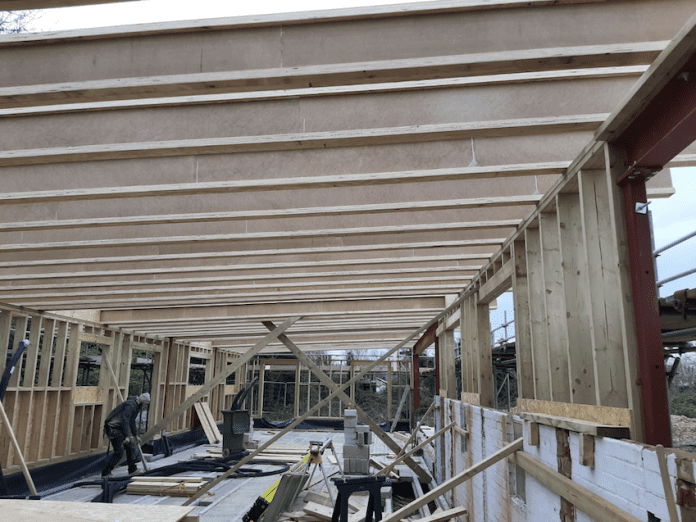
A Kent building firm has been helping preserve some of England’s architectural and agricultural heritage, while ensuring the new occupants enjoy a cosier experience than its original residents – with help from insulation specialist Actis
Brian Taylor and colleagues from Tonbridge-based TW Projects are rebuilding and extending a historic hoppers’ hut in East Peckham to create a 150 sq m single-storey home that offers the bucolic charm of 19th-century rural living without the privations endured by the hop pickers who lived there.
They are creating the ideal balance between history and thermal comfort by using products from the Actis Hybrid range, which has enabled them to achieve a U-value of 0.14 in the walls and 0.15 in the roof.
Hoppers’ huts were built as temporary accommodation for hop pickers on Kent farms in the 19th and 20th centuries. Many seasonal workers moved in from the capital for the harvest, with reports of around a quarter of a million Londoners travelling to Kent for the season by the early 20th century.
Huts averaged around 80 sq ft, with some as ‘large’ as 200 sq ft.
While early hoppers’ huts were made of timber, latterly clad with corrugated iron, they began to be made with bricks after the 1850 abolition of the brick tax.
Exterior, single-skin walls were 9 inches thick, but by the 1930s and 1940s some were built of 18-inch by 9-inch breeze blocks or pre-cast concrete.
The limewashed huts generally had an earth floor and were lit by candles or paraffin lamps. Water was supplied via a standpipe, and hop pickers shared a toilet block with an earth closet and a communal cookhouse.
This is a far cry from the experience of the new residents of the revamped piece of agricultural heritage. They will enjoy their own private bathroom and a kitchen with all mod cons.
TW Projects have used Actis Hybrid products on earlier projects
Brian and his team, who have used Actis Hybrid products on earlier projects and found them particularly impressive, installed two layers of honeycomb 105mm insulation Actis Hybris in the roof.
They used insulating breather membrane Actis Boost R Hybrid, 140mm Hybris and 50mm of PIR in the walls of the timber frame extension and the stud walls created within the original structure.
Brian explained: “We’ve been using Actis Hybrid products for years because they’re so quick, clean and easy to use – and are thermally brilliant. In fact, for a bit of fun I had a race with one of my fitters using PIR and Actis, and the Actis won, hands down. We were all impressed with the quickness and ease of fitment.”
Actis Eolis HC was launched last year
The launch last year of a new Actis product – Eolis HC – a two-in-one reflective insulation with an integrated vapour barrier which is particularly effective for shallow rafter scenarios – has whetted Brian’s appetite to carry out another speed competition with his colleagues on future projects.
He may want to prove to himself that time trials showing that installing Eolis HC is at least twice as quick as using PIR board are indeed correct!













